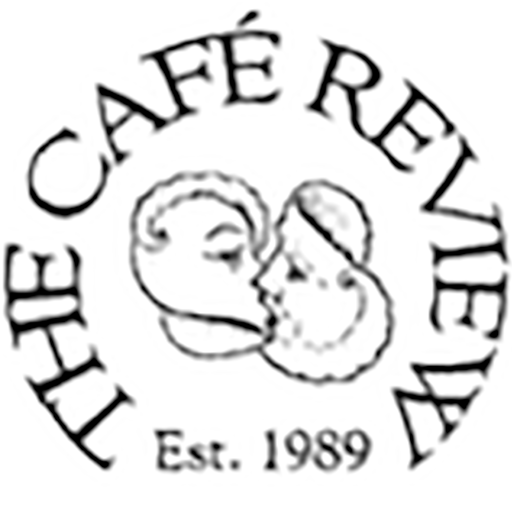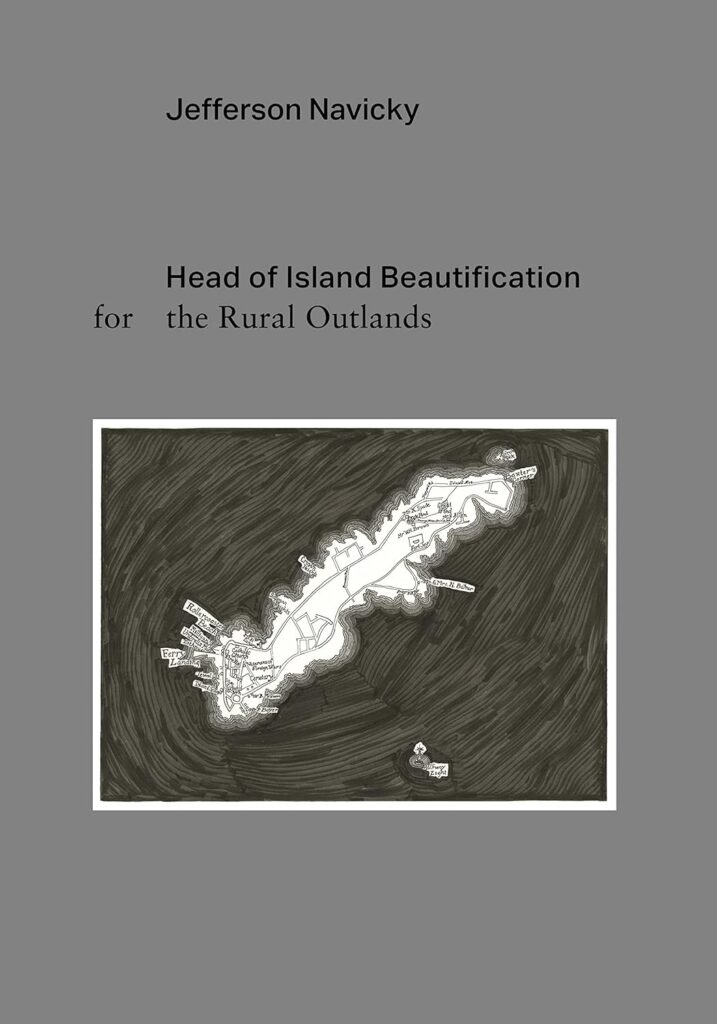Head of Island Beautification for the Rural Outlands
Head of Island Beautification for the Rural Outlands
by Jefferson Navicky
AC Books, 2023,
126 pages, paper, $22.00,
ISBN: 9781939901255
What parts of ourselves haunt our tides and shorelines when our familial ghosts leave? Head of Island Beautification for the Rural Outlands invites us to pull off our masks and no longer cling to our expected shadows. Jefferson Navicky’s hybrid work, written from the perspective of real–life islander William Harrison Brown, amusingly balances fact and fiction. These persona prose poems push us to imperfectly observe and participate in the ancient sounds of ocean life within a backdrop of family secrets and unanswered silences. With grief disguised as a “good sauce,” Navicky bends time between the living and the dead like a crab listening to the hum of her ancestors through her own seaweed–slicked shell.
We are instantly transported to what feels like the séance of Aquaneck Island, where place is coveted as if it is a loved one from a past life sending a message: “The internal ocean is made of dark blue bones, skeletons, jettisoned ghosts, landscapes never seen, never able to be depicted, and the vestiges of breath in a sand–grained manyness of things that cannot be counted.” Here, cemeteries breathe as much as the ocean, and vice versa. Between these chattering teeth above and below sea level, Navicky skillfully weaves dark humor through smirking similes: “As I rowed in and among the cattails that guarded his shore like hot dogs in preparation for a barbeque, I whistled a carefree tune.” This tongue–in–cheek scaffolding is continuously added and removed; ironically, the physical symbol of Brown’s “house on stilts” poses the question of how long must we guard a place before taking action — in altering our direction and our environment’s, in adjusting how much salt we add when telling a certain story?
With P.O. boxes and canvas dimensions peeking between pages, Navicky pushes the idea of an archive to honest, playful, and vulnerable heights — and basements. One of the most intriguing lists, “Diet,” contains sections such as “What I Like & Eat, What I Like to Eat but Don’t, What Makes Me Gag, [and] What Nourishes Me.” Archives of fish chowder, yellow beer, peach jam, brussels sprouts, and “crackers with stinky cheese veined blue” brilliantly nod to class, economic status, efficiency, landscape, and heritage, just like Navicky’s modern forager tribute to the dump, or “the place where all the good stuff gets left.” We are urged to scavenge for the ugly selves we are most fearful of but need to pay attention to: “to archive is the most beautiful act, a gesture of love and memory, both acts of the most intimate forgetting.”
What will rock readers most is Navicky’s humble portrayal of our inaccurate memories, whether that be of parents or who they left us to become. Navicky hauntingly writes of a mask found in an art studio as a “grotesque little thing about the size of the palm of a large hand, and made out of seaweed and coral, shells and the detritus of a living ocean. It was a broken thing. There were some rocks. It was a treasure.” All at once our hidden and obvious selves collide like hexagons in a kaleidoscope, suffering and applauding simultaneously. It almost feels like an artistic statement — our creative bodies as instruments and shields, a reminder that secrets are often the greatest risk to the spirit, for both the dead and the living.
Navicky calls us to look vacancies in the face, however terrified we may be. What dark steps will we purposely choose to climb toward in our uncertain waiting? Whose history will we set the table for, no matter how unsure or mysterious? With lyrical fiction floating between beards, feathers, bathtubs, and walking sticks, Navicky confesses what could be the ultimate ship–in– a–bottle note:
I live in the recurrence of my story, whatever one I manage
to tell. In this way I’m trying to narrate the unnamable, to
become the painter I have never been.
— Amanda Dettmann


